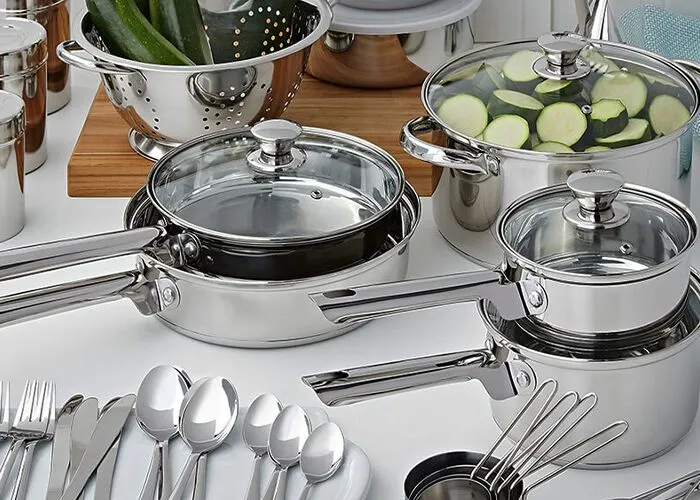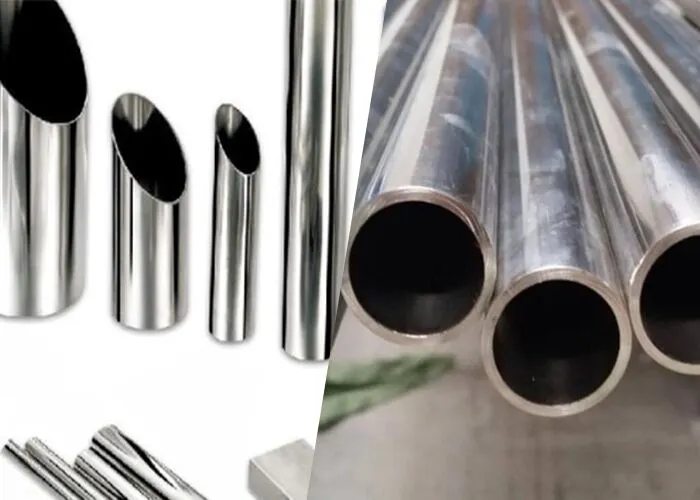Stainless steel has gained significant importance worldwide. It is an essential commodity that is irreplaceable in thriving modern economies. It plays a crucial role in fabrication, production, and construction, with various types and grades driving technological innovations. Its versatile nature makes it amenable to diverse applications across industries.
|
Table of Content
|
Stainless steel is a family of alloys composed of iron, carbon, and a minimum of 10.5% chromium. There are different types of stainless steel including martensitic, duplex, ferritic, austenitic, and precipitation hardening, each consisting of various grades based on their chemical composition.
Among these types, 304-grade stainless steel is the most common and widely used in the austenitic series. It offers excellent corrosion resistance and is suitable for a broad range of applications. Additionally, there is a low-carbon variant of grade 304 known as grade 304L, which is available with dual certifications in certain cases. Let us delve into the chemistry behind SS 304, uncovering its chemical composition, physical and mechanical properties, distinguishing features, and applications.
What Is SS 304?
SS 304, also known as 18/8 stainless steel, is an austenitic alloy of stainless steel. The name 18/8 stainless steel comes from its composition, which is a combination of 18% of chromium and 8% of nickel. Additionally, 304 stainless steel contains small amounts of other elements such as carbon, silicon, manganese, and phosphorus. The elements combined contribute to its overall properties.
So, if you want to know what the exact chemical composition of SS 304 is, SS 304 chemical composition is as follows:
- Chromium (Cr): 18-20%
- Nickel (Ni): 8-10.5%
- Carbon (C): 0.08% maximum
- Manganese (Mn): 2% maximum
- Silicon (Si): 0.75%
- Phosphorus (P): 0.045% maximum
- Sulphur (S): 0.03% maximum
The presence of chromium provides SS 304 with excellent corrosion resistance, while nickel enhances its resistance to oxidation and adds stability at high temperatures. Carbon improves the strength and hardness of the alloy, and manganese aids in maintaining the austenitic structure. Silicon helps to prevent oxidation and improve resistance to scaling, while phosphorus and sulphur are controlled to ensure better weldability.
What is the Chemical Composition of SS 304?
|
% |
304 |
304L |
304H |
|
C |
0.0 - 0.07 |
0.0 - 0.03 |
0.04 - 0.08 |
|
Mn |
0.0 - 2.0 |
0.0 - 2.00 |
0.0 - 2.0 |
|
Si |
0.0 - 1.00 |
0.0 - 1.00 |
0.0 - 1.0 |
|
P |
0.0 - 0.05 |
0.0 - 0.05 |
0.0 - 0.04 |
|
S |
0.0 - 0.03 |
0.0 - 0.02 |
0.0 - 0.02 |
|
Cr |
17.50 - 19.50 |
17.50 - 19.50 |
17.00 - 19.00 |
|
Ni |
8.00 - 10.50 |
8.00 - 10.50 |
8.00 - 11.00 |
|
Fe |
Balance |
Balance |
Balance |
|
N |
0.0 - 0.11 |
0.0 - 0.11 |
0.0 - 0.10 1 |
What Are the Physical and Mechanical Properties of SS 304?
SS 304 has a wide range of physical and mechanical properties that make it suitable for various applications. Some of the key 304 stainless steel properties are—
- Density: The density of stainless steel 304 is approximately 8 g/cm³.
- Melting Point: The melting point of 304 stainless steel is around 1400-1450°C (2550-2650°F).
- Tensile Strength: SS 304 has a tensile strength of 515 MPa (75000 psi).
- Yield Strength: The yield strength of SS 304 is 205 MPa (30000 psi).
- Elongation: 304-grade stainless steel has an elongation of 40% (in 50mm).
- Hardness: The Rockwell hardness of SS 304 is typically in the range of 70-90 HRB (Rockwell B Scale).
- Electrical Conductivity: SS 304 is a poor conductor of electricity compared to metals like copper and aluminium.
These properties make SS 304 suitable for applications in various industries, including architecture, food processing, chemical processing, and pharmaceuticals.
Read more: A Comprehensive Guide to 316L Stainless Steel – The Differences, Properties, and Benefits
Some other Properties of SS 304:
1. Corrosion resistance:
304 stainless steel corrosion resistance is excellent in various environments, including humid atmospheric conditions and mild chemical environments. The presence of chromium forms a protective passive oxide layer on the surface, which prevents the alloy from further oxidation and corrosion. This makes SS 304 suitable for applications in corrosive environments, such as coastal areas or chemical processing plants.
2. Heat resistance:
SS 304 demonstrates good heat resistance, allowing it to maintain its strength and structural integrity at high temperatures. It can withstand temperatures up to 870°C (1600°F) without significant scaling or deformation. This property makes SS 304 suitable for applications in high-temperature environments, such as heat exchangers and exhaust systems.
3. Cold working:
SS 304 exhibits significant work hardening, which means that it becomes harder and more difficult to shape during fabrication processes. Therefore, when cold working methods are employed, it is often necessary to incorporate an intermediate annealing stage. This intermediate annealing helps alleviate the effects of work hardening, reducing the risk of tearing or cracking in the material.
4. Hot working:
For fabrication methods involving hot working, such as forging, it is essential to ensure that the stainless steel 304 is uniformly heated to a temperature range of 1149-1260°C (2100-2300°F). This uniform heating ensures proper malleability and workability of the material during the hot working process.
After the hot working is complete, it is crucial to rapidly cool the fabricated components. This ensures very high corrosion resistance.
5. Machinability:
SS 304 has good machinability, allowing it to be easily cut, drilled, and shaped using common machining techniques. This property simplifies the manufacturing process and reduces production costs.
What are the Applications of SS 304?

The applications of stainless steel 304 are wide-ranging and impact various industries. Some common applications include:
- Architectural components
- Food processing equipment
- Chemical processing equipment
- Pharmaceutical equipment
- Heat exchangers
- Kitchen appliances
- Automotive components
- Oil and gas industry equipment
What Are the Differences Between Stainless Steel 202 vs 304?

Both SS 202 and SS 304 are austenitic stainless steel. However, they have some notable differences.
- Chemical Composition: SS 202 chemical composition includes 17-19% chromium, 4-6% nickel, and 7.5-10% manganese. On the other hand, SS 304 contains higher amounts of chromium (18-20%) and nickel (8%) and a lesser amount of manganese (2% maximum).
- Corrosion resistance: 304 stainless steel corrosion resistance is superior to that of 202-grade stainless steel because the higher chromium and nickel content of the former provides better resistance to oxidation at high temperatures.
- Physical Properties: SS 304 has better formability and weldability properties, making it more versatile in various operations.
SS 304, with its specific chemical composition and well-balanced properties, is a versatile alloy of stainless steel widely used in many industries. Its exceptional corrosion resistance, heat resistance, and formability make it a preferred choice for various applications. Understanding the chemistry, properties and distinguishing features of SS 304 allows us to make informed decisions when selecting materials for projects, ensuring durability, performance, and longevity.
Read More: Everything You Should Know About 17-4 PH Stainless Steel – How It’s Used in Industries
Purchase Authentic High-Quality SS 304 From Sree Metaliks Limited!
If you wish to know more about 304-grade stainless steel based on the requirements of a specific application or want to request a quote for the same, your best choice would be the Sree Metaliks Limited. Sree Metaliks Limited as a brand has always been committed to customer satisfaction, offering the highest quality of stainless steel and alloys at affordable prices in India. To purchase authentic ss304, visit the company website or contact the sales team today!
For more information, please reach out to us at: Sales@sreemetaliks.com

